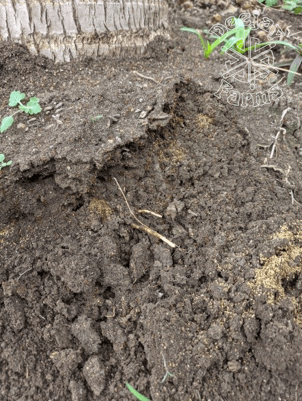
Fire ants form mound around the plants and may damage the roots. A colony of fire ant may extend one meter and half below ground level. There may be more than 150 colony per ha of land. Each colony will have more than 2,60,000 individuals. These ants feed and gather grass seeds, storing them in “granaries” in their large nests. These ants may also feed on other insects, decaying matter and carbohydrate + fat rich vegetation.
Symptoms
The ants climb the canopy and damage initially on the tip of each button on three locations.
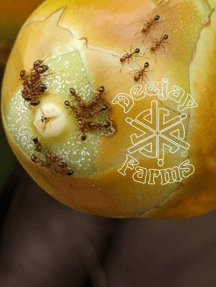
The affected buttons ooze out gummy substance in response to the severe attack by the fire ants.
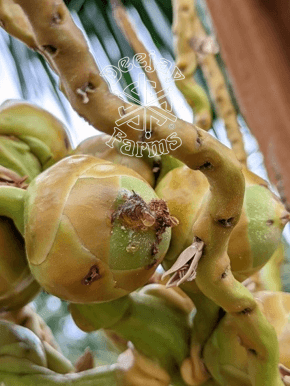
Later, ants make a hole on the perianth and attacks the base of the button attached to the inflorescence. Due to continuous feeding, the buttons detach from the inflorescence and drop down. The abscised layer will have powdery material.
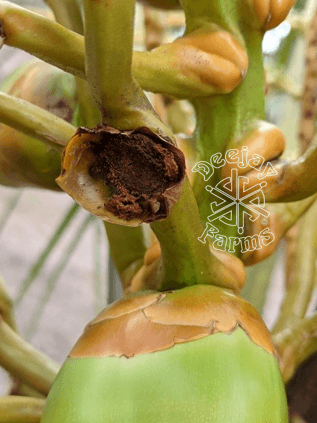
Once the buttons are damaged there is secondary infection due to fungal pathogens. Hence, there will be drying of the buttons as well as wilting of the inflorescence from the top to bottom.
Control Measures
- As fire ants depend on the seeds of the weeds for their colony, kindly remove the weeds. Take a deep ploughing in the interspaces of the palms.
- Spray the inflorescence with Acephate @ 2 g per ltr + Folicur @ 2 g per ltr.
- Base of the affected palms having ant mounds should be drenched with Chlorpyriphos @ 4 ml per ltr. About 40 ltr of the above insecticide solution should be drenched into the soil mound (i.e. 160 ml of chlorpyriphos in 40 ltr of water).
- Mix the soil around the affected palms with Phorate or Fipronil (Regent Ultra 0.6 Gr) @ 150 g per palm.
- Followed by this, follow regular application of recommended dose of fertilizers.
- Follow root feeding of root tonic once in 6 months in following dose:
- Take 1 ltr of root tonic in 4 ltr of water; from this 5 ltr stock solution, take 200 ml per palm for root feeding.
Source:
Mr. Sangamesh
Manager-Technical Service, Deejay Coconut Farm Pvt. Ltd.
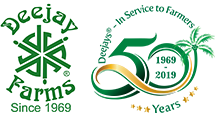
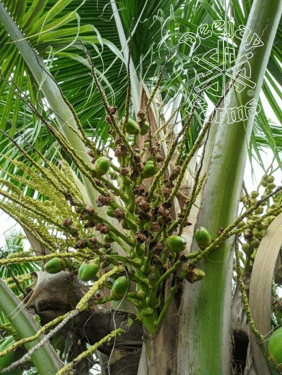
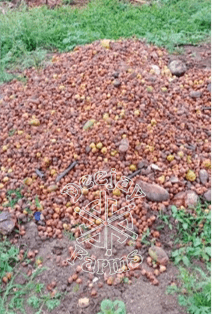






Excellent initiative sir!